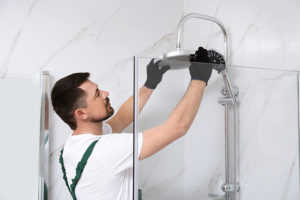What To Do About Frozen Pipes
 It’s an unpleasant surprise no homeowner wants to face. You’re ready to take a shower to jump-start your morning or treat yourself to a nice, hot bath at the end of a long winter’s day, but you can’t because when you turn the taps, water doesn’t come out. Your pipes have frozen.
It’s an unpleasant surprise no homeowner wants to face. You’re ready to take a shower to jump-start your morning or treat yourself to a nice, hot bath at the end of a long winter’s day, but you can’t because when you turn the taps, water doesn’t come out. Your pipes have frozen.
Why It Happens
This isn’t something that occurs every winter, but for some homeowners, they already know that there are certain occasions when it’s a possibility. Some water pipes are not insulated or are positioned in such a way that they are closer to the exterior of a home and exposed to the colder temperatures during the winter months.
On unusually cold days, such as during a cold snap, the constant lower temperature may eventually reach the pipes. Because the environment is below the freezing point, ice will form inside the pipes, blocking the flow of water entirely.
What To Do When Your Pipe Freeze
Depending on the situation, you may be able to handle this yourself, or you may have to call professionals in.
You can do this on your own if you have a good idea of where the frozen blockage is and you feel you can get close enough to it. Frozen pipes in an extension of your home, for example, may mean that you can get into a crawl space with a hairdryer—never an open flame like an acetylene torch—and apply heat to the pipe. After several minutes of warming the pipe this way, the ice inside will melt and the flow of water will be restored.
Pipe Leak Repair Services
Nassau
(516) 629-0353
Suffolk
(631) 693-4907
Queens
(718) 571-8877
Brooklyn
(347) 797-3997
Westchester
(914) 344-6757
If, however, you can’t get access to where the frozen pipe is, you should call plumbers for emergency help. This is the most efficient way to address the problem without necessarily tearing out walls to get to the affected pipe.
